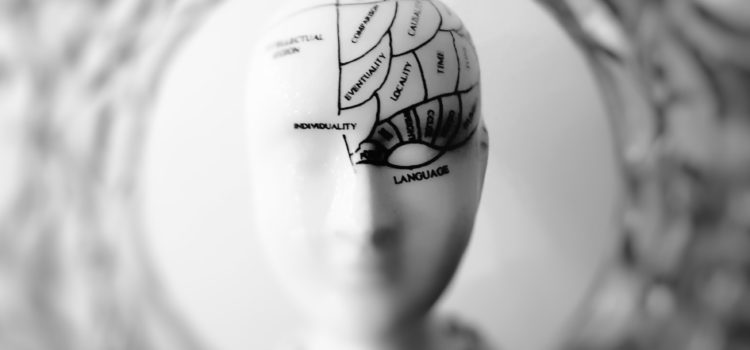
A Comprehensive Exploration of Human Memory: The Mechanisms Behind How We Retain and Retrieve Our Experiences
Visual Depiction of a Neuron^1
The human brain stands as one of the most formidable processors known to mankind—more complex and capable than any supercomputer. It comprises an incredible 86 billion neurons, exceeding 100,000 miles of nerve connections, and more than 10 trillion synapses, enabling it to store information equivalent to a petabyte, or about 100 million gigabytes. To illustrate this, that’s like having the capacity to store 4.7 billion books^1. Yet, despite such immense ability, our memory can often seem delicate, ephemeral, and inconsistent.
Why, then, does such a skilled mind sometimes misplace its keys? And how can we utilize our insights into memory to enhance it in beneficial ways? This piece delves into these inquiries by exploring the structure, development, retention, and retrieval of memory—alongside the science of forgetting and how we can harness this information to our cognitive advantage.
What Is Memory?
Memory extends beyond merely recalling past experiences. It encapsulates everything from identifying a friend’s face to recalling how to ride a bicycle. Regrettably, the minute mechanics of memory at the neuron level remain largely unclear. However, cognitive scientists have established distinct structural models that elucidate the functionality of memory—one of the most significant being the Atkinson-Shiffrin model.
The Overall Framework of Memory
The Atkinson-Shiffrin model posits that memory is categorized into three distinct stages^1,2:
1. Sensory Memory
In the initial phase, stimuli are processed through sensory organs (eyes, ears, skin), forming fleeting impressions. These impressions can be iconic (visual), echoic (auditory), or haptic (tactile). Most sensory information is discarded within mere fractions of a second, unless some element in the environment captures our attention.
2. Short-Term (Working) Memory
This phase encapsulates what you’re currently contemplating, along with bits of memory that linger for a limited time (typically 15–30 seconds)^1,3.
3. Long-Term Memory
This is where everything you consider when talking about “memories” resides. Long-term memory appears to possess virtually boundless capacity and holds everything from mathematical concepts to childhood recollections.
The Memory Process: Encoding, Storage, Retrieval
While the Atkinson-Shiffrin model indicates where memory resides, it doesn’t fully clarify how it arrives there. This is where the American Psychological Association (APA) model is essential. This framework divides memory processing into three phases: encoding, storage, and retrieval.
Encoding – Sifting Through Input
Not every sensory experience transitions into a memory. During encoding, the brain must analyze and prioritize—and it does so with a high degree of selectiveness and efficiency.
Your brain does not log every sensory input like a recording device. Instead, it prioritizes significance. For instance, when reading, your brain concentrates on the essence of the information—the importance of facts, rather than the style of fonts.
Significantly, encoding relies on a synchronization between sensory processing and working memory. Research indicates that sensory data is processed at a swift 30–100 cycles per second, while cognitive processing (working memory) functions at a slower 3–8 cycles per second^3. This limitation explains why we typically can hold only 5–7 items in our short-term memory—our brains “chunk” sensory inputs together by merging multiple stimuli into one unit, which clarifies strategies like chunking phone numbers (e.g., 555-123-4567).
Concentration enhances encoding. During intense studies or emotionally charged moments, the brain slows its cognitive cycle rate, allowing more sensory data per working memory cycle. This prepares the brain for deeper learning^3.
Storage – Ensuring Memories Last
Once information is filtered and encoded, it transitions into storage—primarily involving the hippocampus, amygdala, and prefrontal cortex^3.
– The Hippocampus acts as the entry point to long-term memory, assessing whether a memory is positive, negative, or neutral.
– The Amygdala attaches emotional significance—particularly fear or anger—to memories.
– The Prefrontal Cortex governs complex reasoning and decision-making, determining the relevance of certain memories.
Emotions significantly influence memory strength. Dopamine, frequently associated with rewards, can “tag” memories, increasing the likelihood of their retention. Dr. Charan Ranganath at UC Davis noted that memories linked to rewards are preferentially preserved—an observation drawn from a study where subjects demonstrated superior recall of high-reward stimuli^5. Notably, participants who mentally “replayed” those memories in a relaxed state performed even better, underscoring the importance of consolidation through review^5.
Memory prioritization is instinctive: negative encounters (such as burns or trauma) are entrenched for protective reasons, whereas neutral experiences are often forgotten.
Retrieval – Recalling Memories
Retrieval involves accessing stored information. This is what